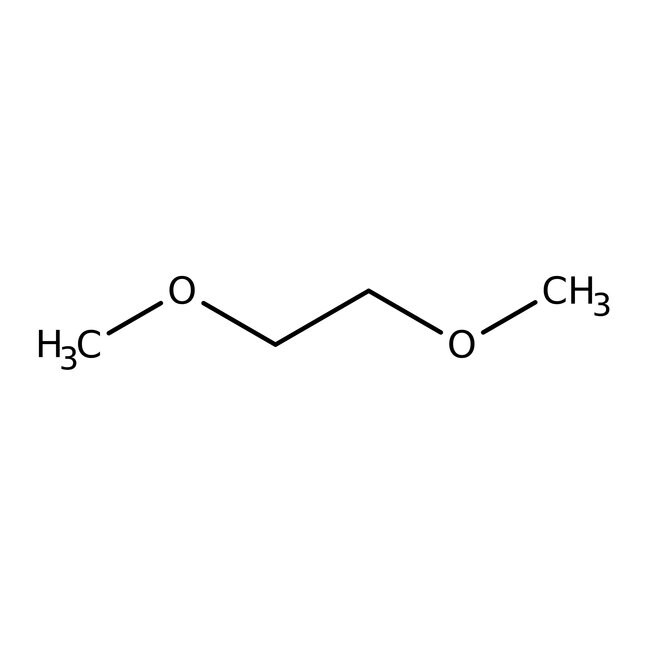Search Thermo Fisher Scientific
1,2-Dimethoxyethane, 99+%, stab. with BHT, Thermo Scientific Chemicals



1,2-Dimethoxyethane, 99+%, stab. with BHT, Thermo Scientific Chemicals
Chemical Identifiers
Specifications
Description
This Thermo Scientific Chemicals brand product was originally part of the Alfa Aesar product portfolio. Some documentation and label information may refer to the legacy brand. The original Alfa Aesar product / item code or SKU reference has not changed as a part of the brand transition to Thermo Scientific Chemicals.
1,2-Dimethoxyethane is widely used as a solvent for electrolyte of lithium batteries, polysilicones, oligo- and polysaccharides. It plays an important role in Grignard reactions, Suzuki reactions and Stille couplings in organometallic chemistry and in pharmaceutical synthesis. It is a higher boiling point solvent and is used as an alternative to diethyl ether and tetrahydrofuran. It is used for the etching of synthetic polymers like polytetrafluoroethylene and other fluoropolymers with alkali metal dispersions.
Solubility
Miscible with water, methanol, ethanol, diethyl ether, acetone, tetrahydrofuran, benzene and toluene.
Notes
Keep away from sources of ignition. Keep container tightly closed in a dry and well-ventilated place. Incompatible with strong oxidizing agents. It can be oxidized on air to form peroxides.
Figures
Documents & Downloads
Certificates
Frequently asked questions (FAQs)
Citations & References
Safety and Handling
Classification of the substance or mixture
CLP classification - Regulation(EC) No 1272/2008
Label Elements
Signal Word
Danger
Hazard Statements
H315 - Causes skin irritation
H332 - Harmful if inhaled
H360FD - May damage fertility. May damage the unborn child
Physical Hazards
H225 - Highly flammable liquid and vapor
EU Specific Hazard Statements
EUH019 - May form explosive peroxides
Precautionary Statements
P210 - Keep away from heat, hot surfaces, sparks, open flames and other ignition sources. No smoking
P280 - Wear protective gloves/protective clothing/eye protection/face protection
P302 + P352 - IF ON SKIN: Wash with plenty of soap and water
P304 + P340 - IF INHALED: Remove person to fresh air and keep comfortable for breathing
P312 - Call a POISON CENTER or doctor if you feel unwell
Additional EU labelling
Restricted to professional users